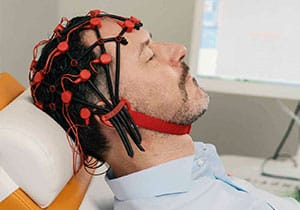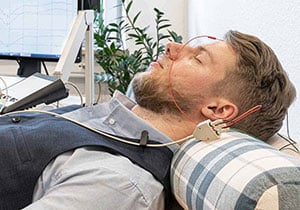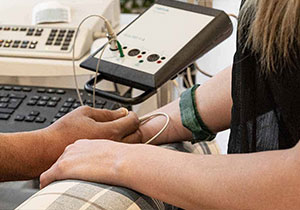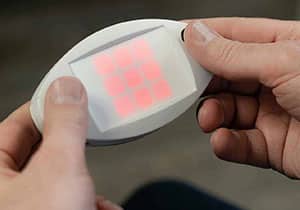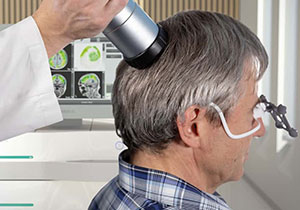
TPS — Transcranial Pulse Stimulation
A modern therapy method for the treatment of Alzheimer’s dementia.
What does a TPS treatment do?
By 2050, around 152 million people will be affected by Alzheimer’s. Among other things, Alzheimer’s damages the nerve cell connections in the brain and thus prevents the transmission of messages between the cells. This leads to memory loss and later even to impairment of important bodily functions. TPS can prevent and help here.
Transcranial pulse stimulation is safe and uncomplicated. The patient sits relaxed in a treatment chair and can move freely at all times. With the help of your individual MRI image findings, we localize the area of the brain to be stimulated in order to improve brain function and well-being.
How does the therapy work?
A therapy session usually lasts around 30 minutes. In total, a TPS® treatment series comprises an average of 6 sessions, which take place within 2 weeks.
Sound pulses are generated in the therapy handpiece, which are then transmitted “transcranially” — i.e. through the skull — to the affected regions of the brain. The area that needs to be activated is targeted with pinpoint accuracy. These areas can be located differently for each patient. Thanks to a navigation system, the treating neurologist can follow exactly where the pulse needs to be applied on the screen and control everything precisely. The TPS® treatment is “non-invasive”, i.e. the pulses penetrate the skin and skull without damaging it. For the first time in the world, TPS makes it possible to penetrate all areas of the brain and target and activate specific areas of the brain.
Are the costs covered by health insurance?
The costs are not covered by statutory health insurance and must be borne by the patient. In the case of private health insurance companies, coverage can be requested by submitting a cost application.

